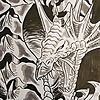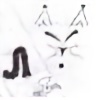HOME | DD
 marrocka — oni
marrocka — oni

Published: 2007-07-26 22:39:26 +0000 UTC; Views: 26345; Favourites: 238; Downloads: 1435
Redirect to original
Description
add to your favorites, this makes the deviation most popular, and this makes the deviation more easy to find when search someting(like japanese art)on the deviantart serach bar.Oni 鬼, are creatures from Japanese folklore, similar to Western demons such as ogres and trolls.They are popular characters in Japanese art, literature and theatre.
Depictions of oni vary widely but usually portray them as hideous, gigantic creatures with sharp claws, wild hair, andtwo long horns growing from their heads. They arehumanoid for the most part, but occasionally, they areshown with unnatural features such as odd numbers of eyes or extra fingers and toes. Their skin may be any number of colors, but blue, black, purple, pink, brown, green, white, and especially red, are particularly common. Their fierce appearance is only enhanced by the tiger-skin loincloths they tend to wear and the iron clubs they favor, called kanabō 金棒. This image leads to the expression "oni with an iron club"鬼に金棒", that is, to be invincible or undefeatable. It can also be used in the sense of "strong beyond strong", or having one's natural quality enhanced or supplemented by the use of some tool.
The word "oni" is sometimes speculated to be derived from on, the on'yomi reading of a character 隠 meaning to hide or conceal, as oni were originally invisible spirits or gods which caused disasters, disease, and other unpleasant things. These nebulous beings could also take on a variety of forms to deceive (and often devour) humans. Thus a Chinese character 鬼 meaning "ghost" came to be used for these formless creatures.
The invisible oni eventually became anthropomorphized and took on its modern, ogre-like form, partly via syncretism with creatures imported by Buddhism, such as the Indian rakshasa and yaksha, the hungry ghosts called gaki, and the devilish underlings of Enma-Ō who punish sinners in Jigoku (Hell).
Another source for the oni's image is a concept from China and Onmyōdō. The northeast direction was once termed the kimon (鬼門, "demon gate"), and was considered an unlucky direction through which evil spirits passed. Based on the assignment of the twelve zodiac animals to the cardinal directions, the kimon was also known as the ushitora 丑寅, or "ox tiger" direction, and the oni's bovine horns and cat-like fangs, claws, and tiger-skin loincloth developed as a visual depiction of this term.
Temples are often built facing that direction, and Japanese buildings sometimes have L-shaped indentions at the northeast to ward oni away. Enryakuji, on Mount Hiei northeast of the center of Kyoto, and Kaneiji, in that direction from Edo Castle, are examples. The Japanese capital itself moved northeast from Nagaoka to Kyoto in the 8th century.[citation needed]
Some villages hold yearly ceremonies to drive away oni, particularly at the beginning of Spring. During the Setsubun festival, people throw soybeans outside their homes and shout "Oni wa soto! Fuku wa uchi!" ("Demons out! Luck in!" "鬼は外!福は内!"). Monkey statues are also thought to guard against oni, since the Japanese word for monkey, saru, is a homophone for the word for "leaving". In Japanese versions of the game tag, the player who is "it" is instead called the "oni".[citation needed]
In more recent times, oni have lost some of their original wickedness and sometimes take on a more protective function. Men in oni costumes often lead Japanese parades to ward off any bad luck, for example. Japanese buildings sometimes include oni-faced roof tiles, which are thought to ward away bad luck, much as gargoyles in Western tradition.
Oni are prominently featured in the Japanese children's story Momotaro (Peach Boy).
Many Japanese idioms and proverbs also make reference to oni. For example, the expression 親に似ぬ子は鬼の子 oya-ni ninu ko-wa oni-no ko means literally "a child that does not resemble its parents is the child of an oni," but it is used idiomatically to refer to the fact that all children naturally take after their parents, and in the odd case that a child appears not to do so, it might be because the child's true biological parents are not the ones who are raising the child. Depending on the context in which it is used, it can have connotations of "children who do not act like their parents are not true human beings (because real human children always take after their parents)," and may be used by a parent to chastise a misbehaving child. Variants of this expression include 親に似ぬ子は鬼子 oya-ni ninu ko-wa onigo and 親に似ぬ子は鬼っ子 oya-ni ninu ko-wa onikko.
Chrysanthemum
In some countries of Europe, Korea and in Japan, white chrysanthemums are symbolic of death and are only used for funerals or on graves. In China, white chrysanthemums are symbolic of lamentation, while in some other countries, of honesty.In the United States, the flower is usually regarded as positive and cheerful.
* The Chrysanthemum Throne Japanese: 菊花紋章, kikukamonshō or kikkamonshō is the name given to the position of Japanese emperor. The chrysanthemum (菊 kiku in Japanese) is the monshō ("badge" or "crest") of the emperor of Japan, and therefore the flower represents the emperor and Imperial House. The term kikukamonshō literally means the "Chrysanthemum Crest" (Imperial Seal).
* The chrysanthemum is one of the "Four Junzi Flowers" 四君子 of China (the others being ume, orchid, and bamboo), known in Chinese as jú 菊. The jú is said to have been favored by Tao Qian, an influential Chinese poet, and is symbolic of nobleness.
* The chrysanthemum is the flower of the American musician fraternity Phi Mu Alpha Sinfonia.
* The white chrysanthemum is the flower of Triangle Fraternity, a society of engineers, architects, and scientists.
* Chrysanthemums were recognized as the official flower of the city of Chicago in 1966.
* The term "chrysanthemum" is also used to refer to a certain type of firework shell that produces a pattern of trailing sparks similar to a chrysanthemum flower.
* The chrysanthemum is also the flower of November
tora(tiger): [link]
ryuu(chinese dragon): [link]
koi(carp): [link]
longmen falls(carp turning dragon): [link]
fu dog: [link]
ying-yang koi: [link]
peonys: [link]
usagi(rabbit): [link]
hannya: [link]
Related content
Comments: 8

Because I like your gallery, I was looking for someone with this style of drawing, I take this to favs and some more sure.
👍: 0 ⏩: 0

The demons of Kimetsu no Yaiba and those that appear in other anime have to do with Satan or the Catholic, Christian religion?
👍: 0 ⏩: 0

One question the onis have to do with satan?
👍: 0 ⏩: 0
























